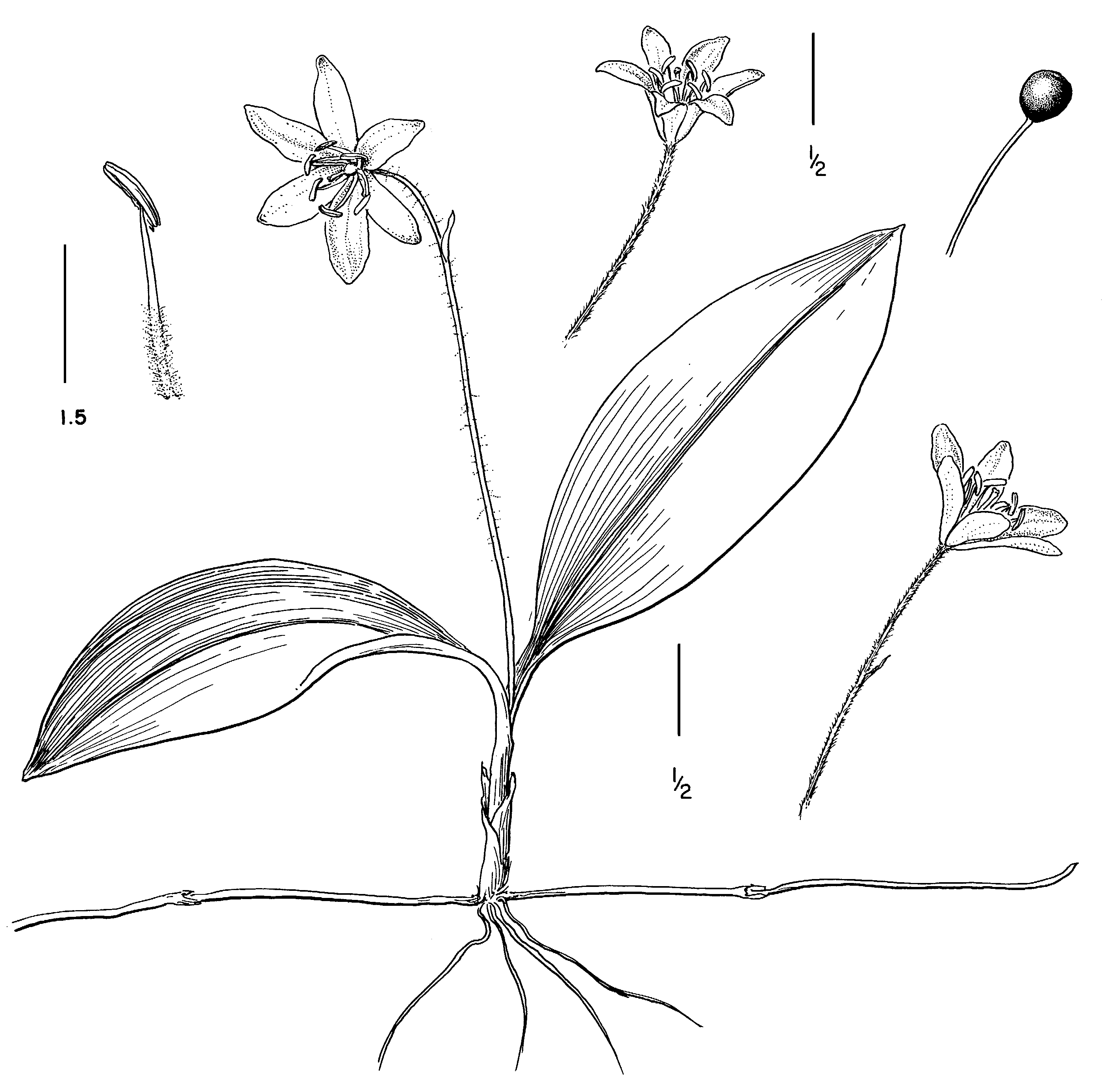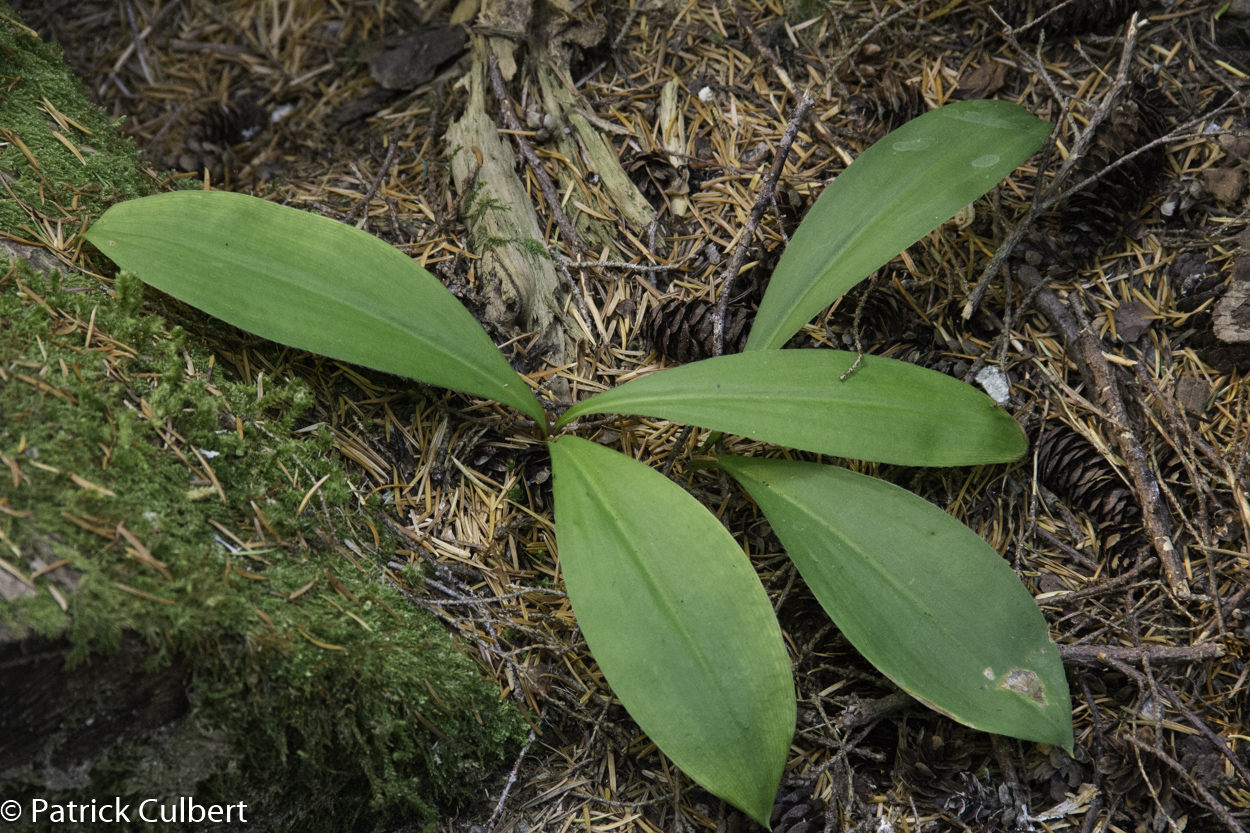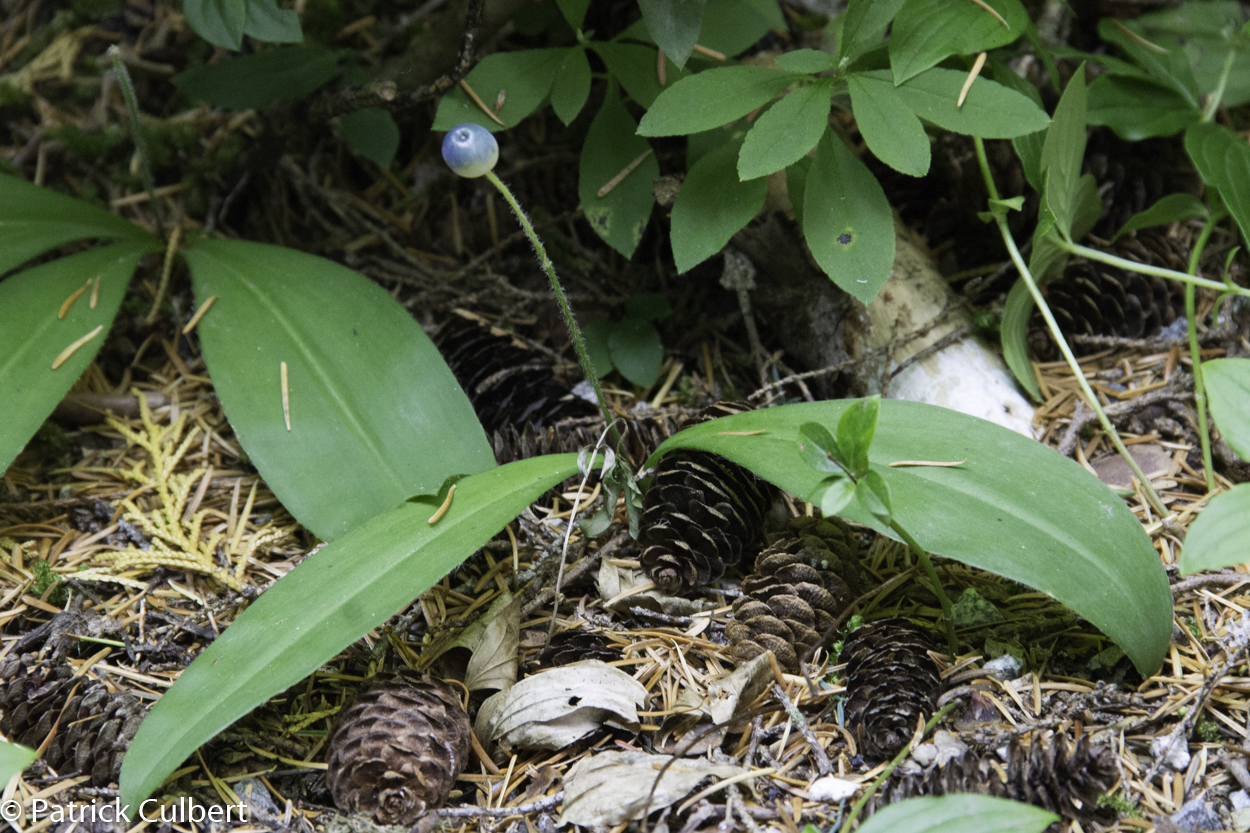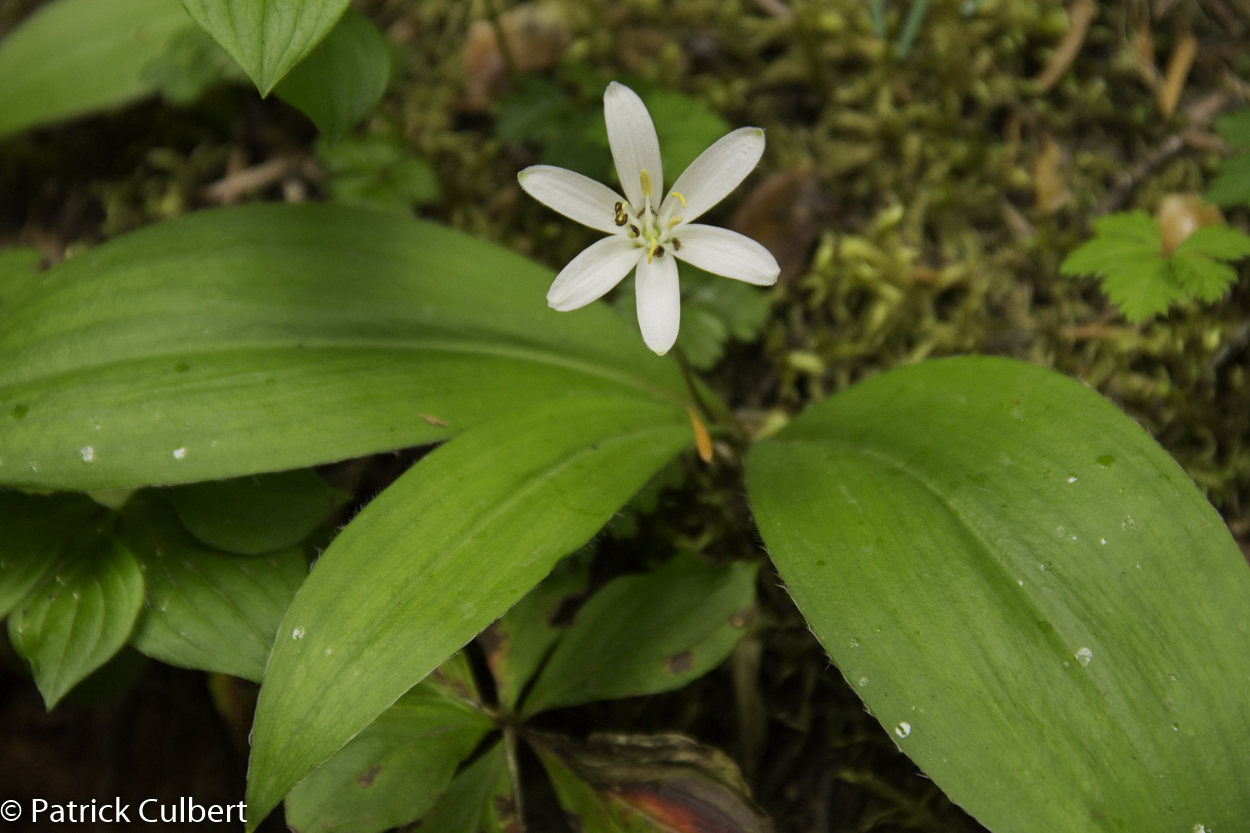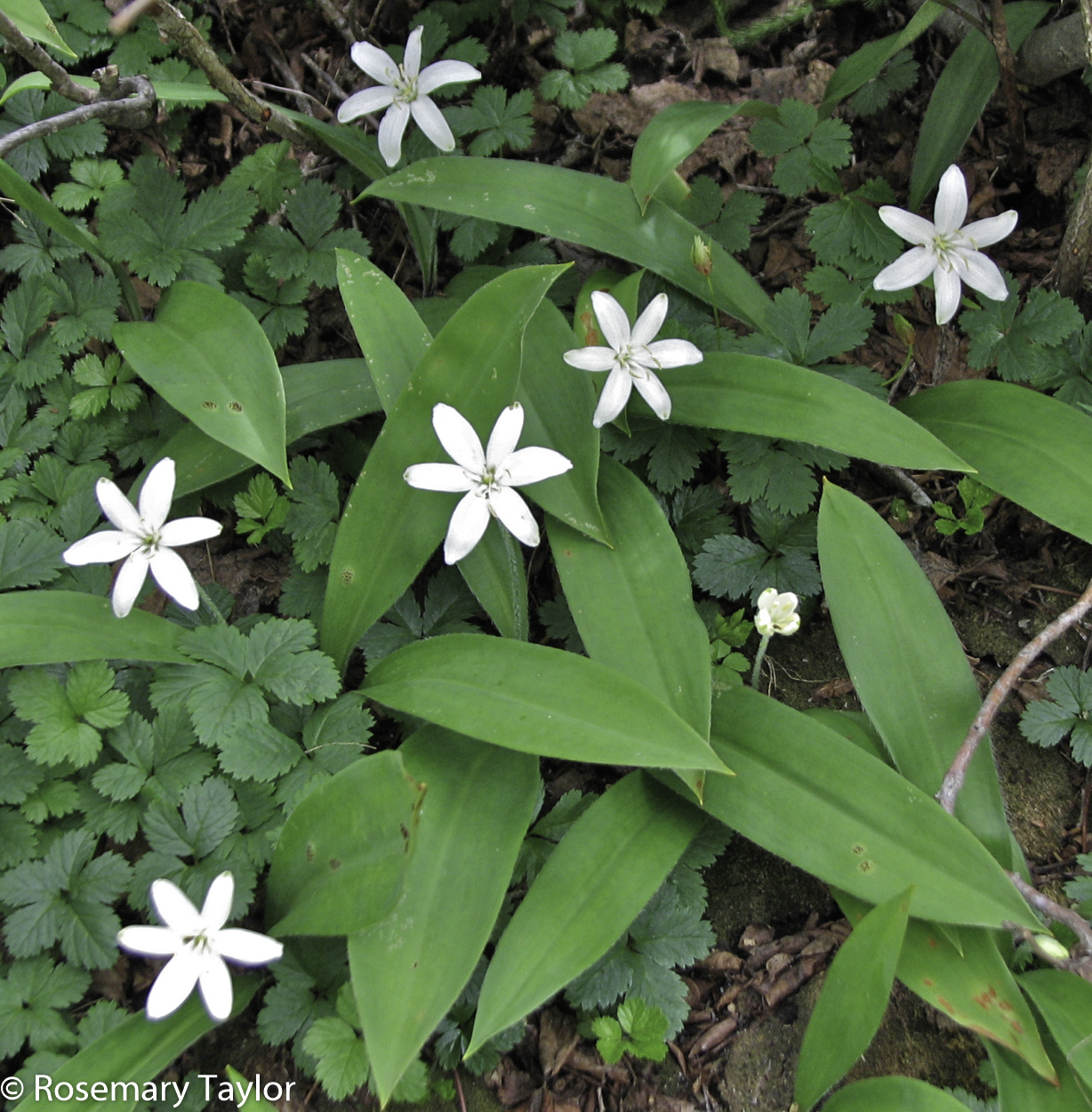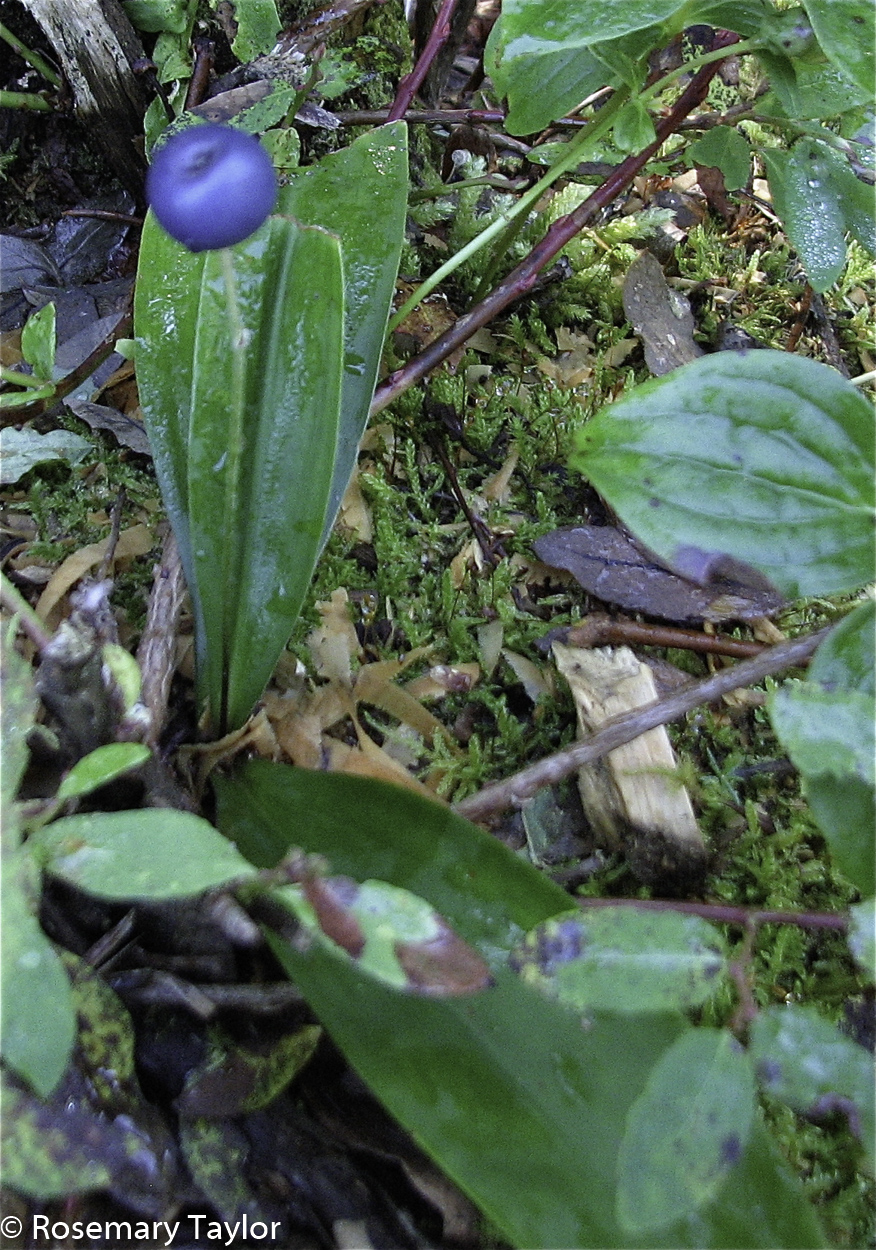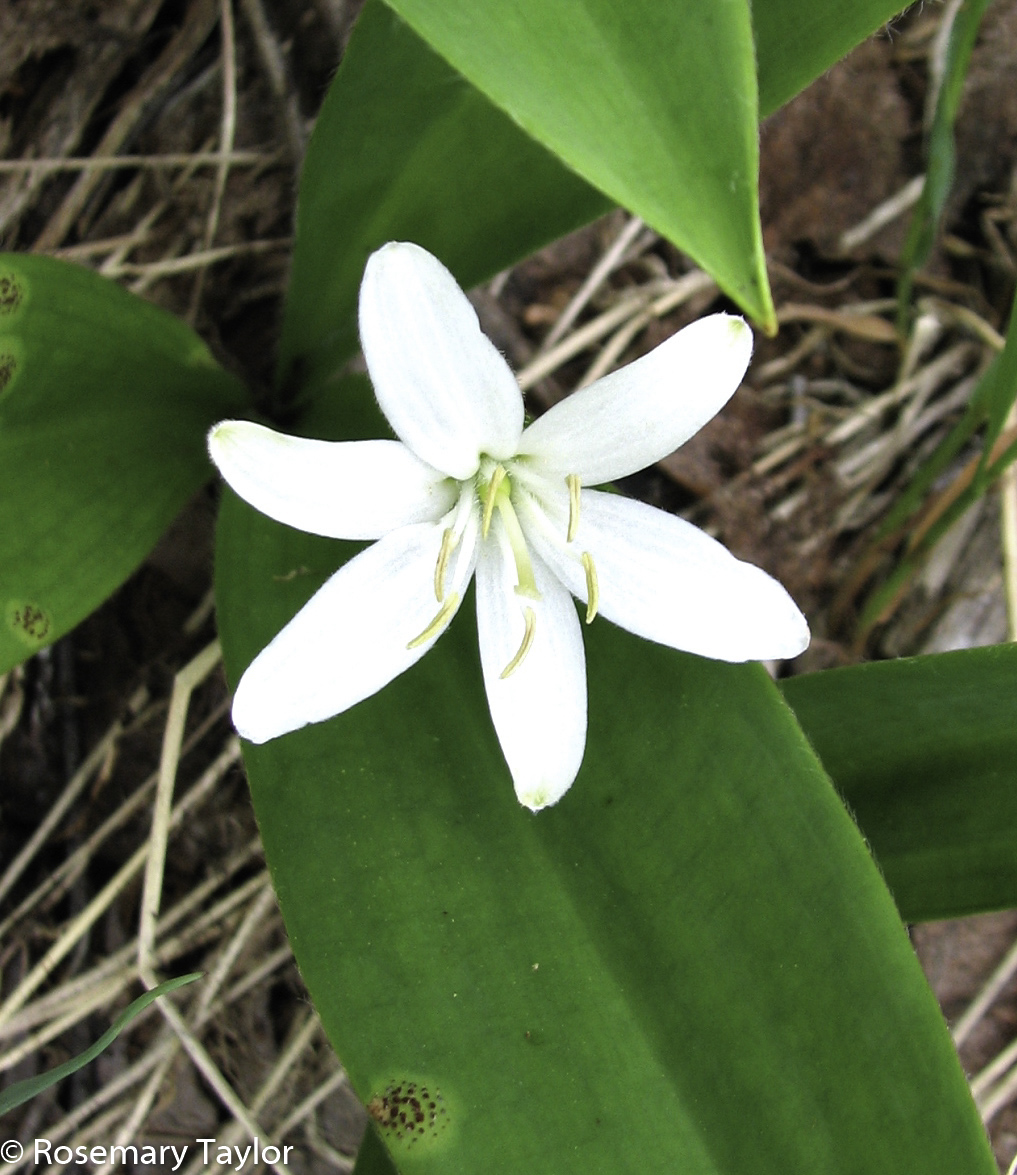Clintonia uniflora – queen’s cup
Common Name
queen’s cup
Alternate Common Names
- blue-bead clintonia
Family
Liliaceae
Scientific Name
Clintonia uniflora
Soil Moisture Regime (SMR)
- Moderately Dry (MD)
- Medium (M)
Soil Nutrient Regime (SNR)
- Medium (M)
Video link
Hitchcock, C. Leo, and Arthur Cronquist. Flora of the Pacific Northwest: An Illustrated Manual © 1973. Reprinted with permission of the University of Washington Press.
General / Habitat
- Perennial herb
- Common in moist forest and openings
- Often abundant from low to subalpine elevations
Key Identifying Characteristics
- Form: Grows up to 15 cm tall
- Leaves: 2-3 leaves in a basal rosette, 7-25 cm long and have a hairy margin
- Flowers: showy, white, cup-shaped flower, erect and nearly always
solitary, as the species name, uniflora, indicates - Fruit: a single bright berry that is metallic blue in color
Lookalikes
- Can be confused with various Erythronium species, describing lilies whose leaves grow in pairs, if it is non-reproductive. Inspecting the leaf margins for hairs will confirm if it is queen’s cup.
Interesting Characteristics
- Berry is eaten by grouse and other ground-dwelling birds
External References
Sources
Douglas, G.W. et al (Editors). 1998-2002. Illustrated Flora of British Columbia, Volumes 1 to 8. B.C. Min. Environ., Lands and Parks, and B.C. Min. For., Victoria, B.C.
Pojar, J. and A. MacKinnon. 2014. Plants of Coastal British Columbia Including Washington, Oregon & Alaska. B.C. Ministry of Forestry and Lone Pine Publishing. Vancouver, B.C.

